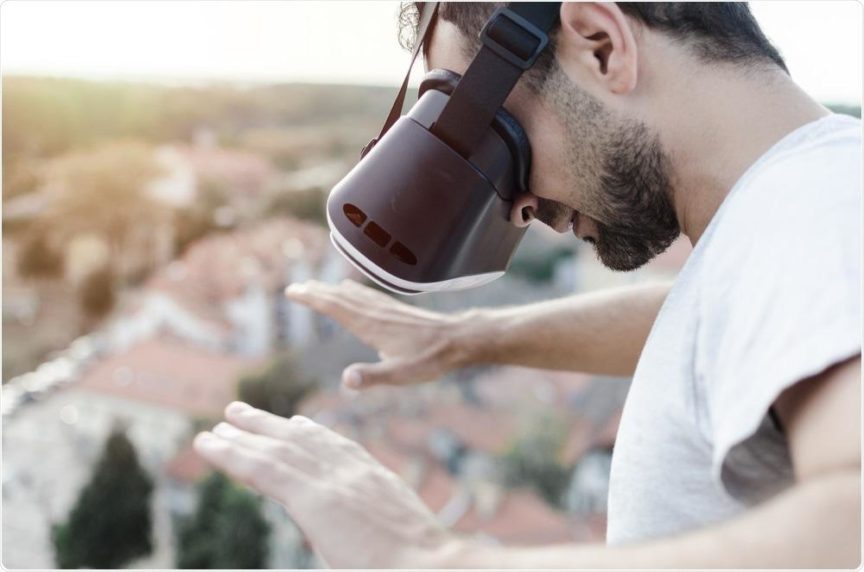A lot of us have our phobias, and one of them is having acrophobia or fear of heights. It is a widespread phobia and people who have this condition will avoid situations which involve heights, like an office on the top floor of a building. Acrophobia will most likely hinder your everyday life. Good thing, with the advancement of technology, it can be cured by virtual reality.
With VR therapy, it will slowly help the affected person to face his fears; in this article, we will continue to talk about VR therapy and how it helps.
The Real Impact of Acrophobia on People’s Lives
People who are affected by this kind of irrational fear have a negative impact on their daily activities. Their excessive fear of heights prevents them from crossing bridges and walkways which curtail travel activity. Here are the other things that affect their daily activities:
- The fear could deter phobics from climbing stairs in schools or workers from working in tall buildings.
- Lead to a loss of quality of life: unable to go to concerts, theatre or shopping centres.
People who are suffering from Acrophobia have limited freedom to enjoy what others can. It can also lower down their chances of possible opportunities because of their fear of heights, especially if you will be applying for a job position but it is located in a high building.
How Can VR Help?
With the emergence of Virtual Reality, many people are using it, not just for entertainment, but also to raise awareness on different issues, in businesses and now as a form of therapy. It can help act as a do-it-yourself therapist, helping people overcome their fear of heights without a professional at their side.
The team at the University of Oxford reported that for more than two-thirds of people reduced their fear of heights after a half dozen virtual reality sessions for over two weeks. Some even tried rope bridges and mountainside.
With VR, people with acrophobia can be slowly treated with the use of the software. They can choose any scenarios that they want. The experiences are meant to actively immerse people in a sensation of height then encourage them to challenge their reluctance to take part. The Virtual Therapist talks the patients by using cognitive therapy techniques to alter their perception of the experience.
VR, according to a clinical psychologist who led the research, has extraordinary potential to help people overcome mental health issues because it gets to the heart of successful treatment and that is making people feel better in everyday life. Hence, people can repeatedly enter the simulations and be guided in the very best ways to think, feel and behave.
Advantages of Using VR as a Tool
The struggle with having a mental health issue is that you are afraid to talk to a psychologist or psychiatrist to help you. What can be right about virtual reality is that you won’t be hesitant in this kind of approach. Here are some advantages of using VR:
- VR can recreate the essential feature of a situation to trigger a fear reaction at an acceptable therapeutic level, which will allow patients to learn how to control it and encode in their emotional memory that the situation isn’t dangerous.
- It will be more accessible for the psychologist to conduct studies and research to find other alternatives to cure a phobia with the use of VR.
- You can always use VR to talk to your Virtual Psychologist and immerse into the virtual world to slowly get over your fear of heights, which means, you can do this any time of the day.
- It can be less expensive regarding treatment compared to going to a psychologist
- It can be embarrassing to be afraid in front of others. With the use of Virtual Reality, a therapist can create a situation artificially, enabling people to learn on how to control their anxiety without going in the public.
- It offers real-time feedback. Getting instant results about success or failure can dramatically accelerate one’s learning curve. It will also be easy to document and analyze the outcomes.
- Allows skills to be developed at your own pace. It can help you with your progression by allowing the repeated practice.
Although there may still be some cons in using VR, with proper use, it can be a handy tool in psychotherapy and can also be used to help with other mental health issues.
Virtual Reality Conquers Fear of Heights
Scientists and psychologists are still doing their research to further the developments of using virtual reality in psychotherapy. It may not entirely cure you of your acrophobia, but it can help you conquer it. With how developers are creating simulations and psychologists recognizing VR, it can assist you in overcoming your fear.
Just imagine you donning on your VR gear, without any inhibitions, can immerse into the simulation and finally, little by little can face your fear of heights. You can do this as a form of exercise or therapy to slowly ready your mind and emotions, without the actual danger of exposing yourself to heights or giving you a more severe anxiety attack.
With what psychologists, scientists and developers are doing, this can still be considered a breakthrough in psychotherapy. Not only can they use VR in helping treat acrophobia or other forms of phobia, but they can also assist in addressing mental health issues like bipolar disorder which also deals with anxiety.
Up, Up, and Away!
Virtual reality did expand its boundaries. Now, acrophobia can be conquered without spending too much time, effort, and not to mention money. You may still need to seek a professional from time to time, but the bottom line is that you can slowly work on your therapy. I am hoping for more good news in virtual reality helping with medical and psychological issues, and I know it will be in the near future.
References:
https://www.rewireme.com/insight/9-ways-virtual-reality-may-helping-harming-us/
https://www.theguardian.com/science/2018/jul/11/automated-virtual-reality-therapy-helps-people-overcome-phobia-of-heights
http://invirtuo.com/en/software/advantages-of-vr/
https://www.nytimes.com/1995/06/21/us/virtual-reality-conquers-fear-of-heights.html

